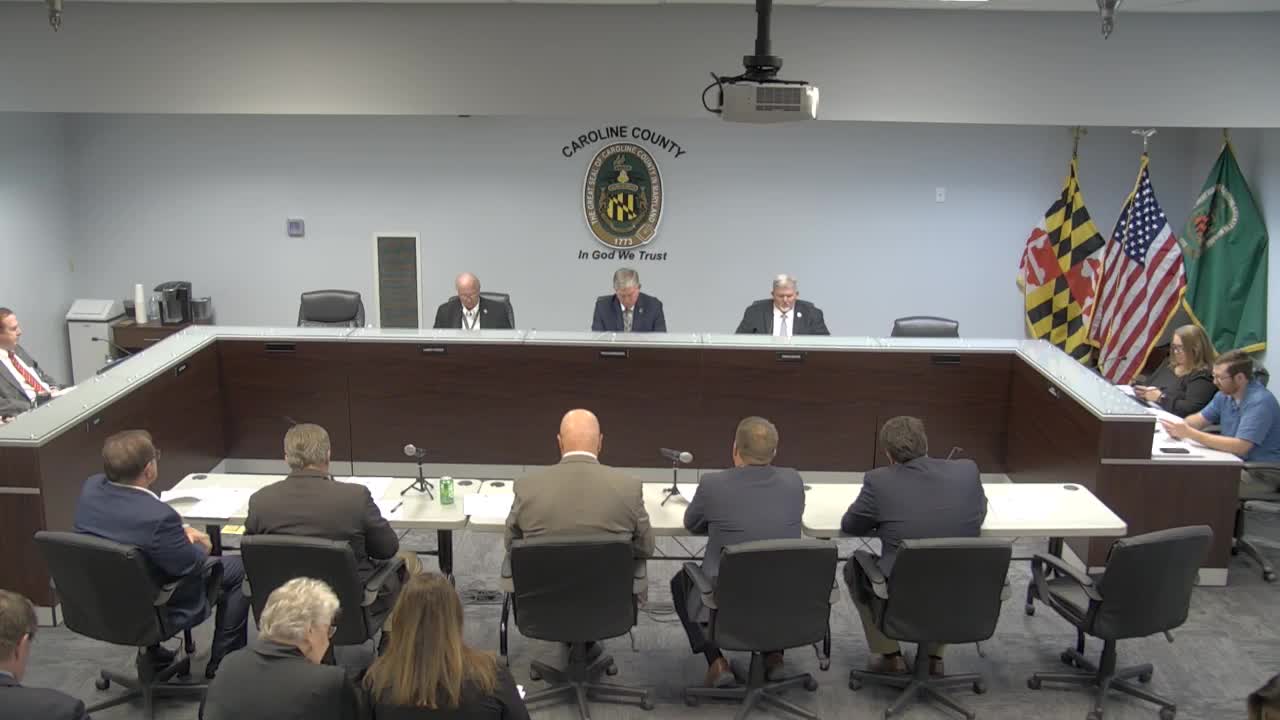Commissioner warns of land seizure fears amid solar push
October 22, 2024 | Caroline County, Maryland
This article was created by AI summarizing key points discussed. AI makes mistakes, so for full details and context, please refer to the video of the full meeting. Please report any errors so we can fix them. Report an error »

In a recent government meeting, significant concerns were raised regarding Maryland's ambitious renewable energy goals and their potential impact on local land use, particularly in agricultural areas. The discussions centered around a draft bill proposed by the Maryland Association of Counties (Mako), which aims to establish a two-mile radius around transmission lines for public utility easements. This initiative has sparked fears among local officials that it could lead to the state exerting control over private land, particularly farmland.
Commissioner Porter emphasized that the county's previous decisions regarding solar energy were not made lightly. He referenced public hearings held in 2017, where it was determined that only about 2% of the county's tillable land—approximately 1,900 acres—would be suitable for solar development, aligning with the county's existing cap of 2,000 acres. He expressed skepticism about the state's ability to meet its renewable energy targets, suggesting that the establishment of utility corridors could ultimately lead to the state taking land from farmers without their consent.
The meeting also highlighted the broader implications of state preemption on local zoning and land use authority. Officials voiced frustration over repeated instances where the state has overridden local decisions, particularly in the context of solar energy projects. They warned that the push for solar development could undermine the agricultural economy, as valuable farmland is converted for energy production.
Concerns were raised about the lack of infrastructure to support the state's clean energy ambitions, with officials questioning the feasibility of relying on solar and wind energy to meet growing demands. The discussion underscored a growing tension between state energy policies and local land use priorities, with officials calling for a commitment from the state to respect local land rights and decision-making processes.
As the county approaches its solar cap, officials anticipate legal challenges and community backlash against further solar developments. The meeting concluded with a call for collaboration among counties to address these challenges and protect local interests in the face of state-level energy initiatives.
Commissioner Porter emphasized that the county's previous decisions regarding solar energy were not made lightly. He referenced public hearings held in 2017, where it was determined that only about 2% of the county's tillable land—approximately 1,900 acres—would be suitable for solar development, aligning with the county's existing cap of 2,000 acres. He expressed skepticism about the state's ability to meet its renewable energy targets, suggesting that the establishment of utility corridors could ultimately lead to the state taking land from farmers without their consent.
The meeting also highlighted the broader implications of state preemption on local zoning and land use authority. Officials voiced frustration over repeated instances where the state has overridden local decisions, particularly in the context of solar energy projects. They warned that the push for solar development could undermine the agricultural economy, as valuable farmland is converted for energy production.
Concerns were raised about the lack of infrastructure to support the state's clean energy ambitions, with officials questioning the feasibility of relying on solar and wind energy to meet growing demands. The discussion underscored a growing tension between state energy policies and local land use priorities, with officials calling for a commitment from the state to respect local land rights and decision-making processes.
As the county approaches its solar cap, officials anticipate legal challenges and community backlash against further solar developments. The meeting concluded with a call for collaboration among counties to address these challenges and protect local interests in the face of state-level energy initiatives.
View full meeting
This article is based on a recent meeting—watch the full video and explore the complete transcript for deeper insights into the discussion.
View full meeting
